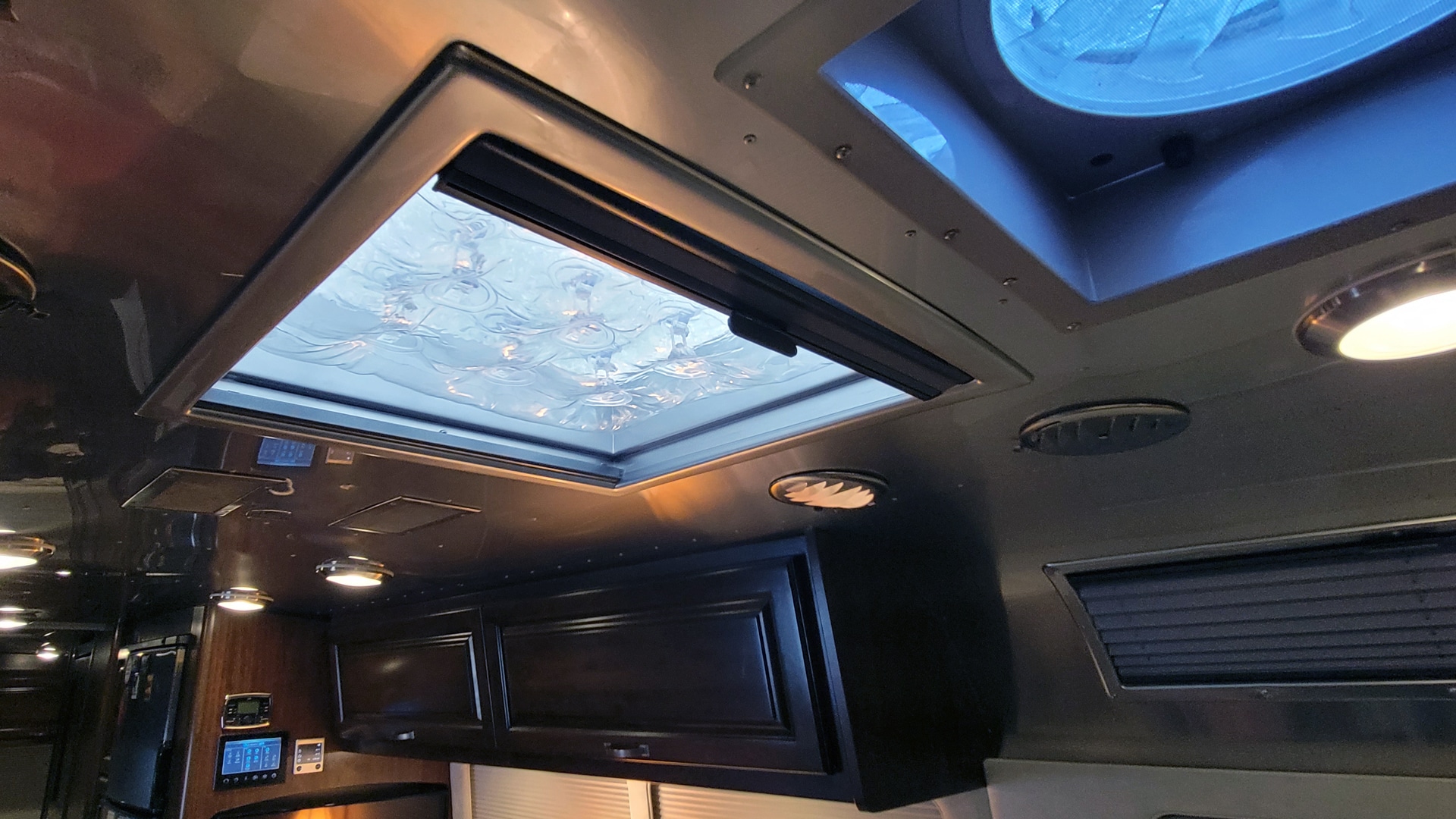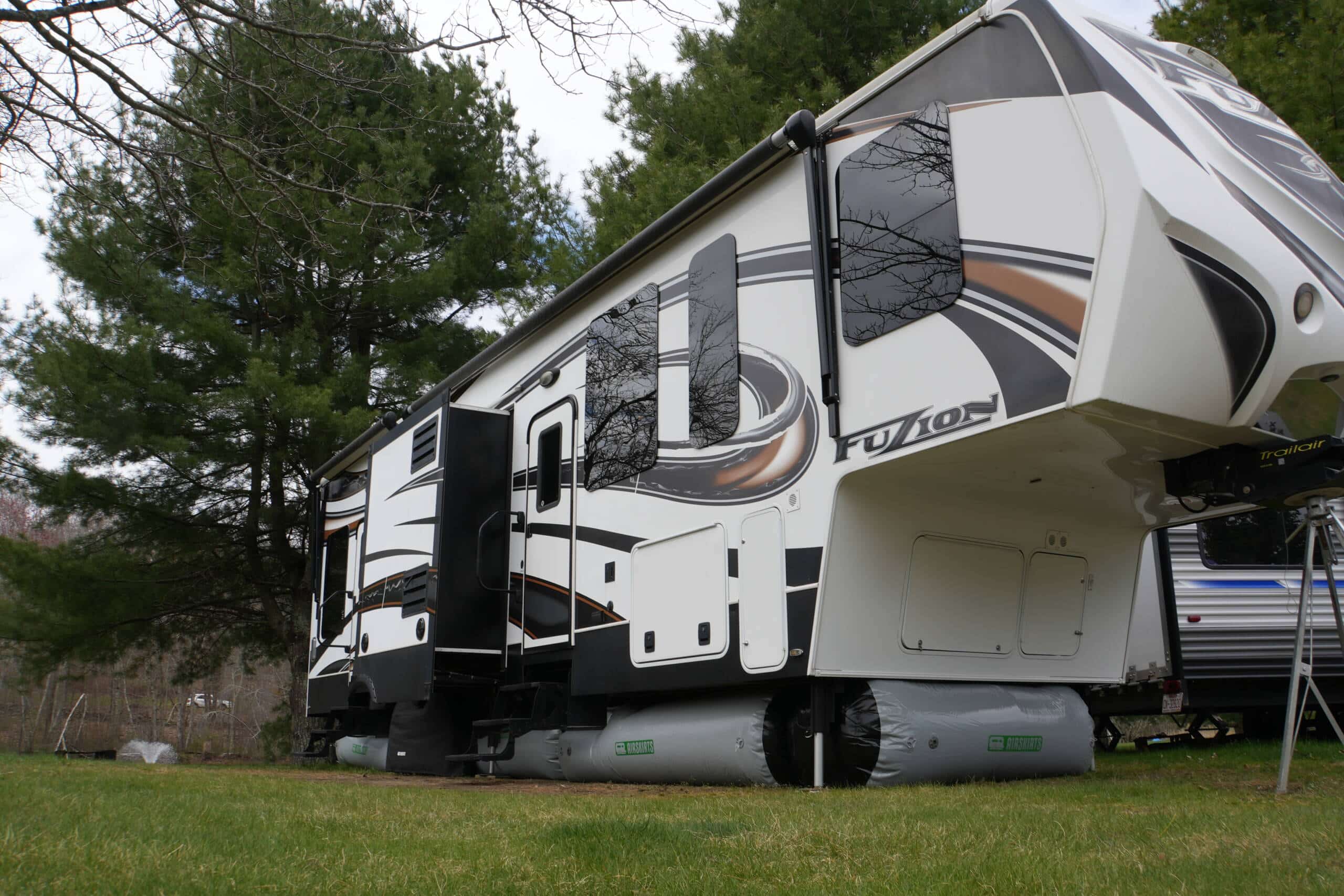Home / RV Insulation / Interior RV Insulation
Interior RV Insulation Ideas for Winter (and Summer)
“Chasing 70 degrees” is a phrase often heard in the RV community, meaning that people are on the move in search of perfect, warm, sunny weather; and this has traditionally been the way most people have used their RVs. However, year-round RVing has become increasingly popular over the last several years. People using their campers during the winter months include full-timers, skiers and hunters, travel nurses and other health care workers, park attendants, and all manner of self-employed and retirees.
In addition to skirting, there are several ways to insulate your rig from the inside to help prevent heat loss and save on energy costs. We’ll go over some of the most effective ways you can make your RV more comfortable (and save money) year-round. We’ve bubbled up the top options below, but click on each or scroll down for a more in depth look at each.
Top 5 RV Insulation Ideas
- Insulate RV Windows – seal and insulate with Reflectix (our recommendation) or other product
- Insulate RV Skylights – insulate with skylight insulators, such as AirLights
- Insulate cabinets – fill any gaps, like those around piping, with suitable insulation for the space
- Insulate underbed storage – fill the space under your mattress with clothes and/or other items
- Insulate Slide outs – add rug to floor, especially where the slide meets the floor
- (Bonus) Insulate RV underbelly – of course, you should have AirSkirts RV skirting (not our focus in this post because it’s our focus so often, but it is important). Check out our kits here
Insulating RV Windows
Unless you have a four season or arctic package, you likely have single-pane windows. It can be very costly to upgrade and few people choose to do this.
- No matter what type of windows you have, maintaining the seals around them will help keep air from leaking in. Regularly check to make sure gaskets and weatherstripping are intact and apply conditioner to these as needed. Inspect caulking and replace when needed. And don’t forget your skylights and vents! These have rain and snow coming down directly on them, so may need more maintenance than your windows.
- The most basic way to insulate your RV’s windows is with clear plastic film. This is often used in homes and is installed by placing double-sided tape around the window, then putting the plastic over it. The plastic can usually be shrunken with a hair dryer, making it nearly invisible. This allows natural light in, but typically isn’t quite as effective as other methods.
- Reflectix, a shiny bubble wrap type insulation, is very popular with RVers. You simply cut to size and it will usually stay in place by itself but you can use some double sided tape if necessary. Reflectix is great in both the winter and summer, as it’s an excellent radiant barrier, reflecting the sun’s rays away from your camper. The drawback with this product is that it does block out natural light (though that may be a plus for those travel nurses on second or third shift).
- Of course, using your shades and curtains in addition to these solutions will increase your comfort levels and if you full-time or regularly camp in the winter, you may want to consider insulated curtains.
Insulating RV Skylights and Vents.
Because heat rises, your skylights and vents can be a major source of heat loss.
- There have been insulators available for a number of years made of foam with a shiny reflective material on one side. These are a good option but they do prevent natural light from getting in.
- Our AirLights provide two layers of PVC in addition to a layer of trapped air – it’s like adding a double-paned window into your skylight. While not specifically designed for vents, they will fit inside some sizes. (If you don’t see your size listed, please contact us as we are looking to expand our selection. Unfortunately, AirLights will not fit in dome-style skylights typically found in showers.)
Insulating RV Cabinets
- Open up your cabinets and take a look at where the plumbing comes in – you’ll probably see some gaps there. Stuffing some fiberglass insulation or carefully putting a bit of low-expansion spray foam in here will be a big help. If you use fiberglass insulation (the “pink stuff”), be sure to check it regularly, as it can mold if it gets wet.
- You can insulate the floors and backs of your cabinets by cutting foam board to size and placing it where the cabinets are against an exterior wall or floor.
Underbed storage
One more storage space many people mention losing a lot of heat from is the storage space under the mattress. There’s two things you can do to stop this:
- Add more insulation. Just filling the space with items like clothing will help, but you can also put a piece of foam board on the underside.
- Getting a heated mattress pad, though this may make it very difficult to get out of bed on cold days!
Slide outs
We frequently get asked about slide outs and we do not skirt them.
- We suggest insulating slide outs with the previous suggestions for windows, cabinets, and mattresses.
- Placing rugs on the floor, especially where the slide meets the main floor will go a long way to keeping your toes warm.
RV Underbelly Insulation
RV skirting is any barrier formed around an RV to protect it from the elements, particularly weather and wind. Typically RV skirting is an insulating perimeter focused on keeping out cold air during winter, and cold weather, camping, but skirts can also be used in the summer to keep cooler air trapped under a camper and internal temperatures down (sometimes referred to as “summer RV skirting“, as opposed to “winter skirting”). Read more:
That covers are look into RV insulation, moving beyond just skirting the exterior, and into insulating the interior of the camper. If you have any questions, comments, or additional tips on what has worked for you and your camper, let us know in the comment section below.




Leave A Comment